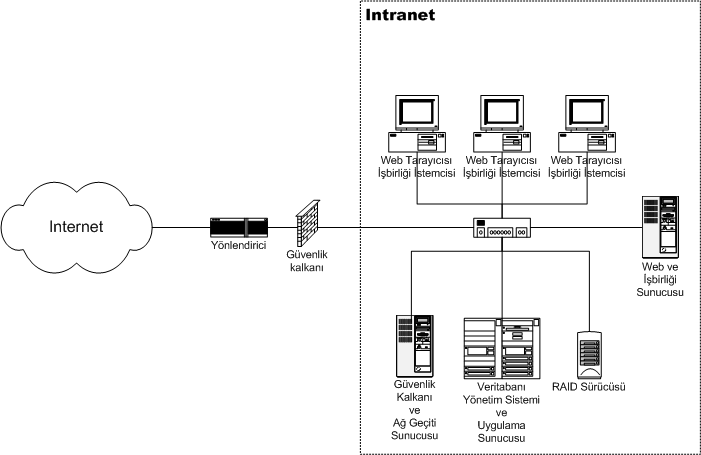Like all digital things, intranets have changed over the last ten years. Launched from the year 2007. Thus much has changed from that fundamental repository of documents and news. Intranets have to adapt to the changing universe that is interactive. All the changes boil down to one notion giving the characteristics they've come to expect from websites to workers. Beyond that intranets deliver value by engaging and encouraging workers and can serve a business function.
Do you read news stories? Stories day sitting on the home page for over a simply eliminated one of the reasons to use the intranet daily. Employee newsletters and intranets utilize more lengthy feature stories they are great for telling a story but take time. Consider content to deliver that update. Try updates on projects or operation that relate to the business goals. Include an external news feed on customers, your business and the business to keep workers informed. The Intranet Benchmarking Forum indicates adding lifestyle content such as wellness articles and health, which drove a 41% increase in traffic.
Use employee writers to help balance the workload and increase participation. Taking it a step further, encourage the employee to then follow and respond to remarks to enable more info transfer and collaboration. The search became the most typical method for individuals to find info online. Give your workers the same service on your intranet with attributes like search-as you type, search results page sorted by view count and smart search this recognizes common misspellings so a match can still be delivered. People like personalization. The Intranet Design Annual Report from Nielsen Norman Group indicates allowing workers to create custom shortcuts or bookmarks.
Borrowing a tool from online news sites, recommend related posts on the intranet news stories. Researchers project there'll be 1.4 billion mobile phones and 268 million tablets in active use in 2013. Companies with a mobile workforce, or a workforce without daily computer access, may increase intranet utilize and build a more informed employee base by providing access via mobile devices, or at home online access. Feedback mechanisms drive participation and purchase-in For company strategies, based on CMSWire. A Hewitt Research Brief on employee participation at double-digit growth businesses found that in businesses where 60 to 70 percent of workers were engaged, average total shareholders return stood at 24.2 percent.
In comparison, in businesses with only 49 to 60 percent of their staff engaged, TSR fell to 9.1 percent. But, a good intranet project is only that if it's not tailored to serve the needs of the business and employees.
Advantages Of Intranet
ADVERTISEMENTS: Intranet: Advantages and Drawbacks of Intranet for Business Enterprises! - To date, the worldwide web was viewed as a communication system intended for linking a venture with the rest of the world. Nevertheless, another significant company application of the online infrastructure is Intranet. Using the corporate databases alongside other repositories of info and documents, these servers bring diverse sorts of information to workers. The authorized employees utilize a common front end browser to browse throughout the vast reserve of information available within the company. The inspiration for Intranet came, possibly from the success of email in the business ventures.
The IT resource demands are rather simple and typically existing hardware could satisfy the need for Intranet. On the front, one wants a web server with one customer the browser. The web server can be configured on a LAN and can be linked over a Wide area network for multi-locational access. The Intranet may or might not be connected to the Internet and if it is linked to the Internet, security measures will have to be obtained to eliminate the probability of unauthorized access.
Thus, Intranet provides access into corporate information repository into the authorized user with a minimum cost, time and effort. The architecture of Intranet could be conceived as an integration of with the four fundamental elements corporate information solutions, web server, communication connections, and Intranet users. The logical connection age among those components is shown in Fig. 12.2. Why Intranet? Even though with the concept of Intranet draws heavily on web technology, the need for intranets stems more from the company pressures to transform the way the company is conducted. A few of the key elements accountable for the recognition of Intranet are listed below: Need to cut down costs! The cost-effectiveness is the headline at the competitive world of today.
That saves on time and cost of communicating information.
Dynamics of markets: Today, changes take place more quickly in the market and business than ever before in the past. Consequently, the info wants to be reported and exchanged more rapidly among all those connected with the firm, including employees, clients, and vendors.
Changing the work environment: As the company and markets become scattered, workers need to be mobile and away in the office. Therefore, it becomes imperative for the workforce to use more affordable means of communication to remain in contact with the office.
Client service: The increasing role of client service in the marketing plan has changed the entire concept of communication in enterprises. Direct contact of the consumer with the consumer service department through Intranet directs with the job to the specialist and ensures better handling of complaints. The related benefit is that it also permits the sales force to take care of more crucial problems than into act as a middleman between the consumer and client service department for the routine sort of complaints.
Intranet Software
Does anyone have experience with open source intranet software? We're considering Microsoft SharePoint, but want a contrast with open source equivalents. Sometimes known as a portal, an intranet, these houses are often constructed on a platform which convenes a wide range of functions and tools. These tools are called portals, content direction systems as well as collaboration platforms. Tools are offered by commercial software suppliers and by the open-source applications community.
open source applications portal collaboration tools Content management system Content' direction' systems - Comprehensive Description - - what're the current Open Source intranet solutions? Why Open Source vs proprietary - pros and cons - what're the technological infrastructure problems? How do you evaluate and select an intranet platform? Examples in use - Examples in Program - now there are two or three examples from the notes below which need to be pulled up here. Some excellent examples offered by community members! - samples of OS Software in Use - I've been using Mambo Open Source Content management system for a Humanitarian Organisation. Beside the center module, you have added on that cover a lot Of the things that you may need: Forums, Document management, multi-language support, innovative enrollment, emailing lists, separate templates, Blogs, wikis, etc.
What kind of interactions and collaborations are you want to encourage? How structured do you want the intranet to be? What workflow are you want to build into the creation of content? I am also exploring Drupal which looks as if it'll cover the majority of the bases required of an intranet. But it is considerably more complicated than the ones I have noted above. Steven Buckley Christian Aid, London - We'd be happy to talk through our own SharePoint installation here in Christian Aid in the United Kingdom. We've got a 600 user solution working on something like 35 locations from 8 countries. My opinion is that SharePoint is a lot more than a regular intranet. You are actually getting a fairly complete document management system, internet search engine, and portal.








No comments:
Please do not enter any spam link in the comment box.